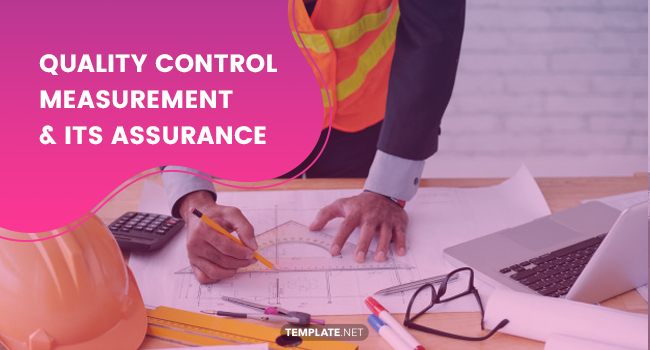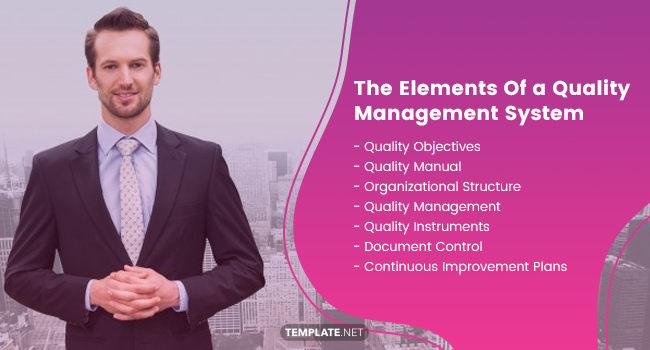Quality Control in Construction Business
Taking on a construction project without the means to assure its quality should never be an option in the industry. After all, it is quality that speaks volumes about an endeavor’s eventual results. With this knowledge alone, we should emphasize the need for quality control. Wonderful quality control plans and an equally amazing quality management plan are boons to any business. In this article, we will explore what it means to exert quality control within construction businesses. Before it is all said and done, we guarantee that you’ll be able to bring greater knowledge and skill into any project you choose to handle from here on.

Quality Control in Construction Business
What Is Quality Control?
Quality control is the pillar of every project delivery. By pure and simple definition, it is a system of standard maintenance that upholds and tests outputs against certain specifications. From there, the results undergo a comprehensive analysis to help facilitate future decision-making. You can expect difference correction at various phases of any construction project, which further highlights how important quality control is. As an example, planning for quality control at the pre-construction phase allows for greater execution once the actual tasks are underway. Other prominent benefits you’d want to learn about are as follows:
- It allows for better construction schedule planning: With quality management protocols set in place, it becomes easier to think of when certain tasks need accomplishing. Both construction scheduling and quality control benefits from the use of a project planning checklist, which is worth any project manager’s time to consider.
- Cost estimation becomes easier to pull off: The use of raw materials and equipment becomes subject to frequent inspections and analyses with the implementation of quality control. So, weeding out the ones that don’t make the cut gives managers the chance to estimate costs and expenses at a faster and better pace.
- Staff morale rises higher: Your employees will benefit from the knowledge that they’re involved in the production of better quality output. Those with gaps in skill and expertise can say that their experience with your projects led to serious growth in their parts, benefiting all involved.
- Good relations between the company and its clients are better maintained: The transparency required, along with improved confidence in whatever management plan you have, leads to better working relationships and happier clients overall.
Benefits like these are too useful for any project manager to just let slip through their fingers. Each one contributes to a greater good that can make huge differences to the result of a project.
Now that we’re done defining what quality control is, it’s more important than ever before for us to tackle the subject of what it means to measure quality control. No respectable project management team would be complete without this knowledge, so read on.
Construction Quality Control Measurement and its Assurance

Before we focus on the measurement, it’s important to first differentiate between control and assurance. The former, as described by the American Society for Quality, are observation techniques meant to ensure the fulfillment of quality requirements. For the latter, the ASQ describes it as systematic and planned activities, implemented to help fulfill the quality requirements. Just like how you’d want to know how successful your marketing strategy is by measuring what you can, so too must you look towards measuring both quality control and assurance.
When it comes to recommended practices, it is prudent to start with the establishment of measurement objectives. Doing so gives you a sense of direction regarding what you seek to accomplish. From there, specifying the measures, the collection of data, and the storage procedures will follow. That, in turn, precedes the analysis procedures, the storing of its results, and the last part, which is to communicate said results. How your company ultimately goes about in the implementation of quality control measures is up to you. As long as you keep these recommended practices in mind, it’s a guarantee that you’re already headed in the right direction.
The Elements Of a Construction Quality Management System

Part of quality control in the construction business is a quality management system. Like all the other parts, it does not just fall into your lap. It must be planned for and executed with extreme precision so that you can get the desired level of success. To better accomplish that feat, it’s best to familiarize yourself with its core elements. Take a look at the list below and see how it all comes together to form a top-notch quality management system.
Quality Objectives
First things first; any quality management process won’t be complete without objectives. These are meant to encourage construction companies to set proper strategic goal definitions. After all, objectives are what translates your vision into actual practice. With quality objectives, links between what the client is looking for and what is realistic and attainable are more easily made.
Quality Manual
This is a quality management system’s first documentation. Included within is the stated motivation regarding why your company adopted a QMS framework, along with the role of quality, risk management, and the importance of technology. Other things to expect should include the following:
- The description of your quality management system’s scope
- The requirements of your quality management system’s standard
- The list of excluded quality management system elements
- The specific quality procedures used by your company
- The flowchart of your company’s critical processes
- The explanation of your organization’s quality objectives and policies
Organizational Structure
Your organizational structure is an important element for any quality management system. It needs to be both clear and updated, complete with the respective responsibilities of each individual within your construction company. The documentation must come in visual guides like flow charts for easy and direct comprehension.
Quality Management
At the core of any modern approach to quality control and its management is data. It is absolutely critical to any quality management system’s success due to its capability to propel improvement and drive preventative activities. If your construction company is terrible when it comes to data management practices, then you can expect operation inefficiencies, inconsistent output quality, compliance risks, low client satisfaction, and even low profit. It is important to manage the right types of data, and at the minimum, the following needs to be included:
- Non-conformances
- Client satisfaction
- Process monitoring
- Supplier performance
- Trends
- Either or both corrective and preventative actions
Quality Instruments
Tool control and calibration are necessary for measuring quality. This is especially true when certain equipment is needed for the validation of your processes. The quality measurement system within your company must dictate a clear maintenance policy based on either international or just nationally recognized standards. Your documentation of such maintenance can address the following:
- Instrument calibration intervals
- Instrument calibration standards recognition
- Adjustment instructions from the manufacturer
- Identification and documentation of calibration procedures
- Tampering and adjustment controls post-calibration
- Damage protection methods from your safety inspection checklist
Document Control
This element contains a broad definition, but among its records will include documents that involve communications, evidence, knowledge sharing, and QMS conformity. For the most part, QMS tends to dictate standards that are necessary to help support quality management at its most minimal. What’s unfortunate with that is that it doesn’t necessarily reflect what is needed for more accurate quality control. Always keep in mind that effective record-keeping is a crucial part of QMS success. Be sure to make your own definitions of your in-house records, as well as policies for the creation, retention, and editing of documents.
Continuous Improvement Plans
Both adaptation and continuous improvements prove necessary for companies to maintain the satisfaction of their clients. This responsibility is company-wide, although leadership still plays an integral role in the implementation of quality-based cultures. Taking note of your daily quality report and your weekly quality report can help you determine where to place your focus and on what specific areas. When it comes to improvement documentation, these are the minimum requirements needed:
- Safety design plans
- Quality control presentation procedures
- Risk-based thinking
- Gradual and breakthrough improvement plans
- Quality management systems assessment
- Compliance requirements
- Innovation designs
Like many aspects of construction, quality control is nothing to scoff at. Making it a part of your business strategies is crucial, and it’s fortunate that you now have the means to do so without too much trouble. Although the fate of your projects is far from assured, the likelihood of success has increased, and greater quality is practically guaranteed. Take everything we’ve taught you—from the measurements, elements, and more—see to it that your next endeavor’s quality will be beyond reproach.






